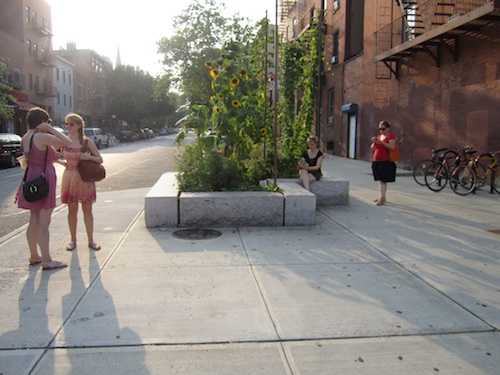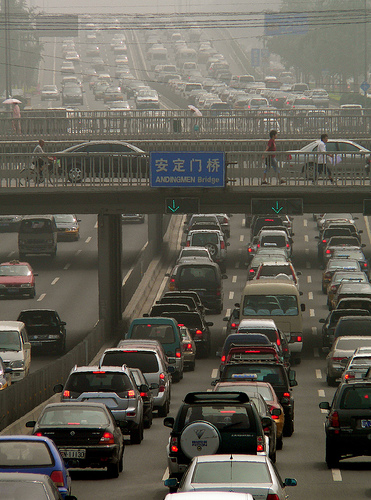 A little “urban acupuncture” has made this street corner healthier and happier.Photo: Sarah GoodyearCame across the interesting concept of “urban acupuncture” in a post on The Guardian today:
A little “urban acupuncture” has made this street corner healthier and happier.Photo: Sarah GoodyearCame across the interesting concept of “urban acupuncture” in a post on The Guardian today:
Watch for the “urban acupuncture” movement to transform urban life in the coming decade. Traced to Finnish architect Marco Casagrande, this school of thought eschews massive urban renewal projects in favor of a more localised and community approach.
“Urban acupuncture is a surgical and selective intervention into the urban environment,” said Los Angeles architect and professor John Southern in an interview, “instead of large scale projects that involve not only thousands of acres, but investment and infrastructure that municipalities can no longer provide.”
Southern explained that the urban acupuncture approach treats cities like a living organism. Such micro-targeting, low-cost, democratic, and empowering tactics provide urban residents the much coveted green space that they desire without driving to a specific location. Although city politicians want to score points from the creation of enormous parks or even large building complexes that score a green certification, those projects often run over budget and even take away space that could benefit local communities in other ways. Furthermore, Southern noted that only a limited number of practitioners profit from large scale projects, while micro-targeted initiatives benefit more individual designers and architects.
We’re seeing more and more of this type of initiative around the country. I’ve written about the Tactical Urbanism movement and the “Better Block” initiative that started in Dallas.
There’s an example of a small-scale green space just a few blocks from my house here in Brooklyn. A large planter with stone blocks for walls was installed two years ago on a street corner as part of a traffic-calming project. Last summer, artist Christina Kelly used it to grow corn; this year, artist Andrew Casner has planted hops and sunflowers there. You can read more about it at Carroll Gardens Patch.
It may not seem like much to an outsider, but it has made a big difference to those of us who pass it each day. What I love about the installation is the way it gets used by the community. You almost always see someone sitting on the comfortable granite surfaces, which are essentially benches. Local business owners keep the plants watered. The crossing guard at the corner puts her coffee there. I almost never see trash in the planter — and when I do, I pick it up and throw it away. I’m sure others do the same. People instinctively respect this little oasis.
By installing this simple piece of infrastructure, the city’s Department of Transportation did a very successful bit of urban acupuncture. What was once a somewhat drab corner — a place to hurry through on the way to and from the subway — has become a gathering space and a bright spot for hundreds if not thousands of people each day.



